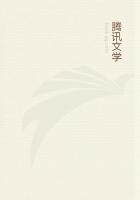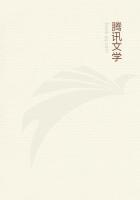Between these, however, and the earlier school which they superseded came the Athenian Kephisodotos, the father, it may be supposed of Praxiteles. His fame rests upon a single work, a copy of which has been discovered, the Eirene and Ploutos. In this, while the simplicity and strictness of the Pheidian ideal have been largely preserved, it has been used as the vehicle of deeper feeling and more spiritual life.
Scopas was born at Paros, and lived during the fist half of the fourth century. He did much decorative work including the pediments of the temple of Athena at Tegea. He participated also in the decoration of the Mausoleum erected by Artemisia to the memory of her husband. In this latter, the battle of the Amazons, though probably not the work of Scopas himself, shows in the violence of its attitudes and the pathos of its action the new elements of interest in Greek art with the introduction of which Scopas is connected. The fame of Scopas rests principally on the Niobe group which is attributed to him. The sculpture represents the wife of Amphion at the moment when the curse of Apollo and Diana falls upon her, and her children are slain before her eyes. The children, already feeling the arrows of the gods, are flying to her for protection. She tries in vain to shield her youngest born beneath her mantle, and turns as if to hide her face with its motherly pride just giving place to despair and agony. The whole group is free from contortion and grandly tragic. The original exists no longer, but copies of parts of the group are found in the Uffizi Gallery at Florence.
The Niobe group shows the distinction between Scopas and Praxiteles and the earlier artists in choice of subject and mode of treatment. The same distinction is shown by the Raging Bacchante of Scopas. The head is thrown back, the hair loosened, the garments floating in the wind, an ecstacy of wild, torrent-like action.
Of the work of Praxiteles we know more directly than of the work of any other Greek sculptor of the same remoteness, for one statue has come down to us actually from the master's own hand, and we possess good copies of several others. His statues of Aphrodite, of which there were at least five, are known to us by the figures on coins and by two works in the same style, the Aphrodite in the Glyptothek, and that of the Vatican. The most famous of all was the Aphrodite of Cnidos, which was ranked with the Olympian Zeus and was called one of the wonders of te world.
King Nicomedes of Bithynia offered vainly to the people of Cnidos the entire amount of their state debt for its possession. Lucian described the goddess as having a smile somewhat proud and disdainful; yet the eyes, moist and kindly, glowed with tenderness and passion, and the graceful lines of the shoulders, the voluptuous curves of the thighs, are full of sensuous feeling. The goddess, as represented in coins, stood beside a vase, over which her drapery is falling, while with her right hand she shields herself modestly. The head of Aphrodite in the British Museum, with its pure brows, its delicate, voluptuous lips, and sweet, soft skin, is, perhaps, the nearest approach which we possess to the glorious beauty of the original.
Other Aphrodites, the draped statue of Cos among them, and several statues of Eros, representing tender, effeminate youths, illustrate further the departure which Praxiteles marks from the restraint of Pheidias. Another of his masculine figures is the graceful Apollo with the Lizard. The god, strong in his youthful suppleness, is leaning against a tree threatening with his darts a small lizard which is seeking to climb up. Still another type of masculine grace left us by Praxiteles is his statue of the Satyr, of which a copy exists in the Capitoline Museum. The Satyr, in the hands of Praxiteles, lost all his ancient uncouthness, and became a strong, graceful youth, with soft, full form. In the Capitoline representation the boy is leaning easily against a tree, throwing his body into the most indolent posture, which brings out the soft, feminine curves of hips and legs. In fact, so thoroughly is the feminine principle worked into the statues of the Apollo, the Eros, and the Satyr, that this characteristic became considered typical of Praxiteles, and when, in 1877, was discovered the one authentic work which we possess of this artist, the great Hermes of Olympia, critics were at a loss to reconcile this figure with what was already known of the sculptor's work, some holding that it must be a work of his youth, when, through his father, Kephisodotos, he felt the force of the Pheidian tradition, others that there must have been two sculptors bearing the great name of Praxiteles.
The Hermes was found lacking the right arm and both legs below the knees, but the marvellous head and torso are perfectly preserved. The god is without the traditional symbols of his divinity. He is merely a beautiful man. He stands leaning easily against a tree, supporting on one arm the child Dionysus, to whom he turns his gracious head with the devotion and love of a protector. The face, in its expression of sweet majesty, is distinctly a personal conception. The low forehead, the eyes far apart, the small, playful mouth, the round, dimpled chin, all bear evidence to the individual quality which Praxiteles infused into the ideal thought of the god. The body, though at rest, is instinct with life and activity, in spite of its grace. In short, the form of the god has the superb perfection, as the face has the dignity, which was attributed to Pheidias. Nevertheless, the Hermes illustrates sensual loveliness of the later school.
The ******* with which the god is conceived belongs to an age when the chains of religious belief sat lightly upon the artist.
The gds of Praxiteles are the gods of human experience, and in his treatment of them he does not always escape the tendency of the age of decline to put pathos and passion in the place of eternal majesty.














